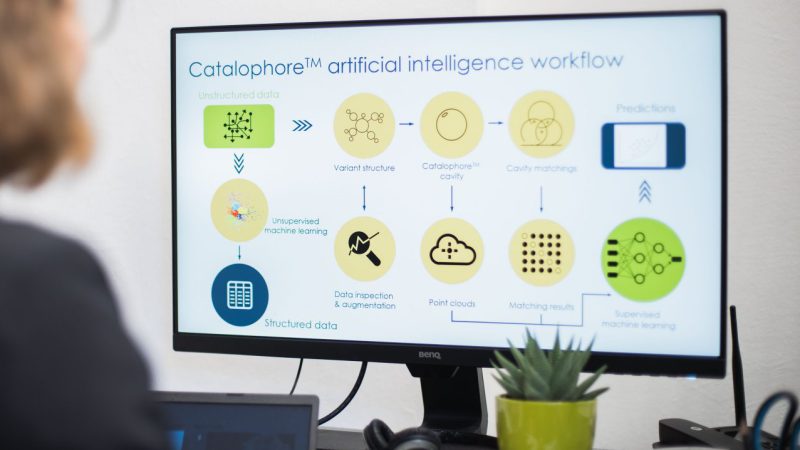Like any virus, SARS-CoV-2 is constantly changing. A wide variety of mutations are the result, to which vaccine manufacturers have so far only been able to react retroactively. Researchers from Graz, Austria have succeeded in using modern AI-based screening methods and virtual scenarios to study and predict the relevance of existing, but also future corona virus variants. This will allow vaccine manufacturers to optimize existing vaccines more quickly to make them effective against a wide range of mutations and to to gain earlier control over epidemics.
Biological systems like viruses are continuously changing and thus constantly evolving, which causes different mutations. How quickly new variants become apparent depends on the type of the virus, but also on how widespread it is. The more widespread a virus is, the higher the probability that evolutionarily favored mutations will prevail.
Artificial intelligence for screening
A joint project from scientists from Innophore, the Austrian Centre of Industrial Biotechnology (acib) and the University of Graz is taking a closer look at these emerging SARS-CoV-2 mutations and is assessing their relevance and danger using modern Artificial Intelligence (AI)-based screening methods. The researchers initially explored the structural makeup of the virus to understand how and where it changes, or also to predict how it might change in the future. At the same time, they started to continuously analyze global sequence data. With this dataset, which needs to be constantly expanded, the Austrian scientists have been able to monitor the spread and change of the virus since the beginning of the pandemic and now for instance know that changes occur throughout the genome of the virus and that these sometimes have direct effects on infection and transmission.
One step ahead
To estimate how these and future mutations will spread, the researchers are using computer modeling and AI to virtually calculate different scenarios, also matching their data with clinical and laboratory observations. With the help of these models, researchers can assess the dangerousness of viral mutations in supercomputer experiments even before the virus has changed – putting them one step ahead of the virus.A forecast for vaccine development
These methods allow vaccine manufacturers to more quickly optimize existing vaccines to be effective against current viral mutations such as S477N or S477G. BioNTech has already taken notice of the work of the Austrian researchers in a recent publication, confirming the data on S477N and S477G and pointing out the stronger binding of the variants to human cells. This is an important basis for designing appropriate adaptations for vaccines, but also offers hope in the fight against future pandemics. Similar to a weather forecast, the researchers use existing modeling data to estimate what the situation could be like tomorrow or the day after. In the development of influenza vaccines, for example, virus research also forecasts which influenza strains will spread epidemically and uses the available data to produce appropriate vaccines that are effective against these variants.
From a bioinformatics point of view, the scientists have far more data on SARS-CoV-2 than on influenza, meaning that in the future they have higher chances and more comprehensive possibilities to predict the ‘virus weather’ in order to be able to react to it earlier and to gain earlier control over epidemics as well – from forecasting to prevention to a pre-emptive response system. This will be highly relevant, since it is undisputed that epidemics will continue to accompany our lives.
Serine 477 plays a crucial role in the interaction of the SARS-CoV-2 spike protein with the human receptor ACE2″ in Scientific Reports
Picture credits: Innophore
